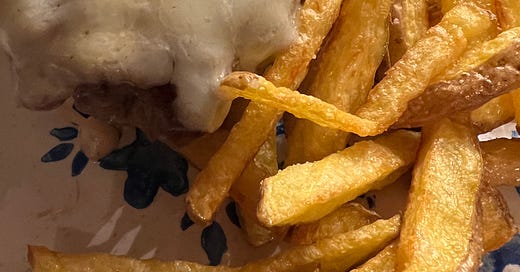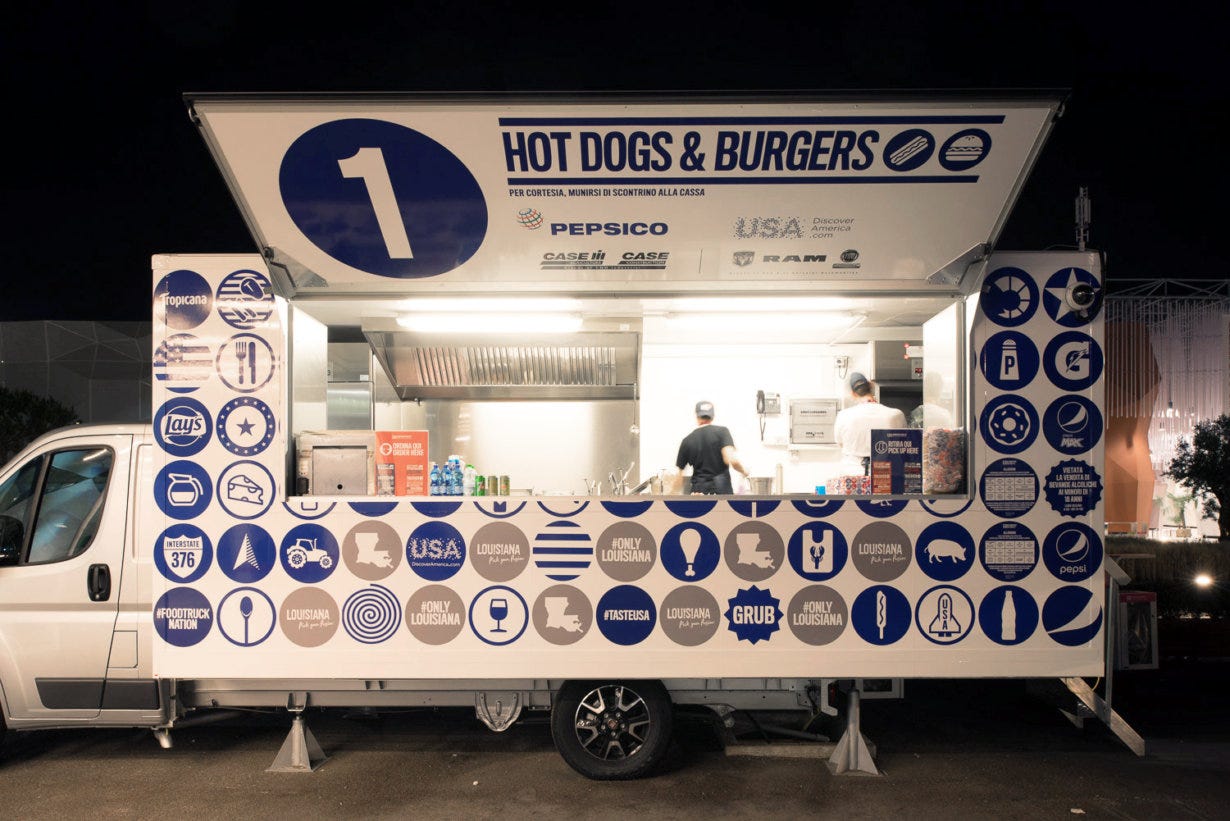Issue #37 awaits. I give you a burger. Enjoy. Don’t forget to listen and subscribe to my podcast, What’s Burning, about the pressing food and restaurant issues of our time and what we can do to fix them. Also, register and tune in to my upcoming interview with Claudia Roden, February 9 at noon (ET). —Mitchell
The hamburger is an American cliché. It is also delicious. The other day Nate asked why we never have hamburgers for dinner. The truth is I never think to make them. Friday night, because of his nudging, I did. Boy was that good. I know that what I’m about to say seems like a contradiction, but when it comes to hamburgers, I think simpler is better. And by simple, I mean good beef left pretty much alone, some melty cheese, a fresh bun, preferably homemade, some homemade French fries, and, of course, an array of homemade condiments.
I realize I just made something simple seem really complicated because of the homemade part. But the only thing that takes any time, really, is the bun. Because it was Friday and I was making challah anyway, I just pinched off two balls of dough and rolled them into burger buns. These days, I do almost nothing to my meat for burgers. I make fries quickly, without fuss, using Jeff Steingarten’s cold-oil technique. I seared the burger in a salted cast-iron pan, topped it with local cheddar cheese, some red onion, a dill pickle, some lettuce, it all made for a very satisfying and very American meal.
I realize that burger preferences are a truly personal thing. So, I’m going to share my preferences not to try to persuade you to come over to my side, but to encourage you to be mindful of the options and the choices you make. Please feel free to share your own thoughts on burgers by clicking the button below.
The Burger
People mix all kinds of flavorings and other condiments into ground meat to make burgers. Spices, herbs, alliums, both fresh and dried, various crumbs, eggs, ketchup, Worcestershire, mustard, even cheese, and sometimes cream. James Beard recommended ice cubes to keep the meat from overcooking and to keep it juicy. I’ve used all of these in various combinations and they can produce delicious burgers.
But lately, here’s what I like to add: salt. Nothing else. Well, maybe some black pepper. Of course, it helps to start with very good, flavorful meat. Could be dry aged. Should be fatty. I like 80% lean, max. The other night I used 80:20, local, Finger Lakes, grass-fed, grass-finished beef. It was great. A famous wholesale meat supplier in New York recommends a combination of equal parts chuck, sirloin, and brisket for his premium burger mix. If you can grind it yourself, so much the better. Freshly ground meat is noticeably more delicious than meat purchased already ground. But if you can’t do it yourself, just buy some good meat. Season it lightly with salt (you are going to add more during the cooking) and if you like, a little black pepper. If all you can find is standard, bland grocery store beef, turn to the spice cabinet and have at it.
When it comes to shaping, I take a minimalist approach, as well. I’m not always opposed to a big, thick ½-pound burger patty, but generally I prefer a smaller, thinner ¼-pounder, if you will. I like to gently press the meat together as I flatten it, rather than compress it into a dense ball before flattening it, as I find the latter can create a tough puck.
The Cheese
When I think burger, I automatically think cheeseburger. It’s just a natural combination to me, like peanut butter and jelly. And while gastronomically I fully support anyone who thinks the best cheese for a cheeseburger is a slice of good ol’ American cheese—all salty and gooey and umami, as it is—I just can’t bring myself to support the system that produces it. So, I choose cheddar, local, raw-milk cheddar, thinly sliced so it melts on top of the hot patties while still in the pan.
The Bun
I think we often neglect the importance of the bun in making a great burger. It needs to be the right texture, size, and proportion for the patty. Fluffy is good, but it requires enough structure to hold everything together and a decent crust to catch the juices that run off the burger when you bite into it. I stumbled on a recipe for burger buns in my beloved The Fannie Farmer Baking Book by Marion Cunningham, and I’ve been making them for burgers ever since (when I’m not stealing bits of challah, dough, that is). They come out exactly as I want. If you don’t want to bother making your own, look for a brioche or challah bun. Pretzel rolls are pretty great for burgers, too.
The Fries
If you are going to have a burger, you’ve got to have fries. And while I generally shun deep-frying at home because of the waste and mess (as I noted in last-week’s fried chicken issue), I find the cold-oil technique less of a production and less wasteful. What is this technique and how is it different? Well, general wisdom and experience suggests the best French fries are made by frying freshly cut potatoes twice, first in 325°F. oil for a quick blanch to draw out the starch, draining and cooling them, and then frying them a second time in 375°F oil until crisp. There’s no denying that this technique produces excellent, crisp fries. It’s how they are made at Belgian fry shops. But it’s too much of a hassle for home, #imho.
Years ago, Vogue food writer Jeffrey Steingarten explored the science of French fries and settled on a technique of starting the potatoes in cold oil, bringing them up to temperature together, and frying until crisp. This is both really easy to do at home, and it produces delicious fries. Whenever we want French fries now, this is what I do. I’ll also note that once the oil is cool, you can strain it and use it again for frying. #wastenot
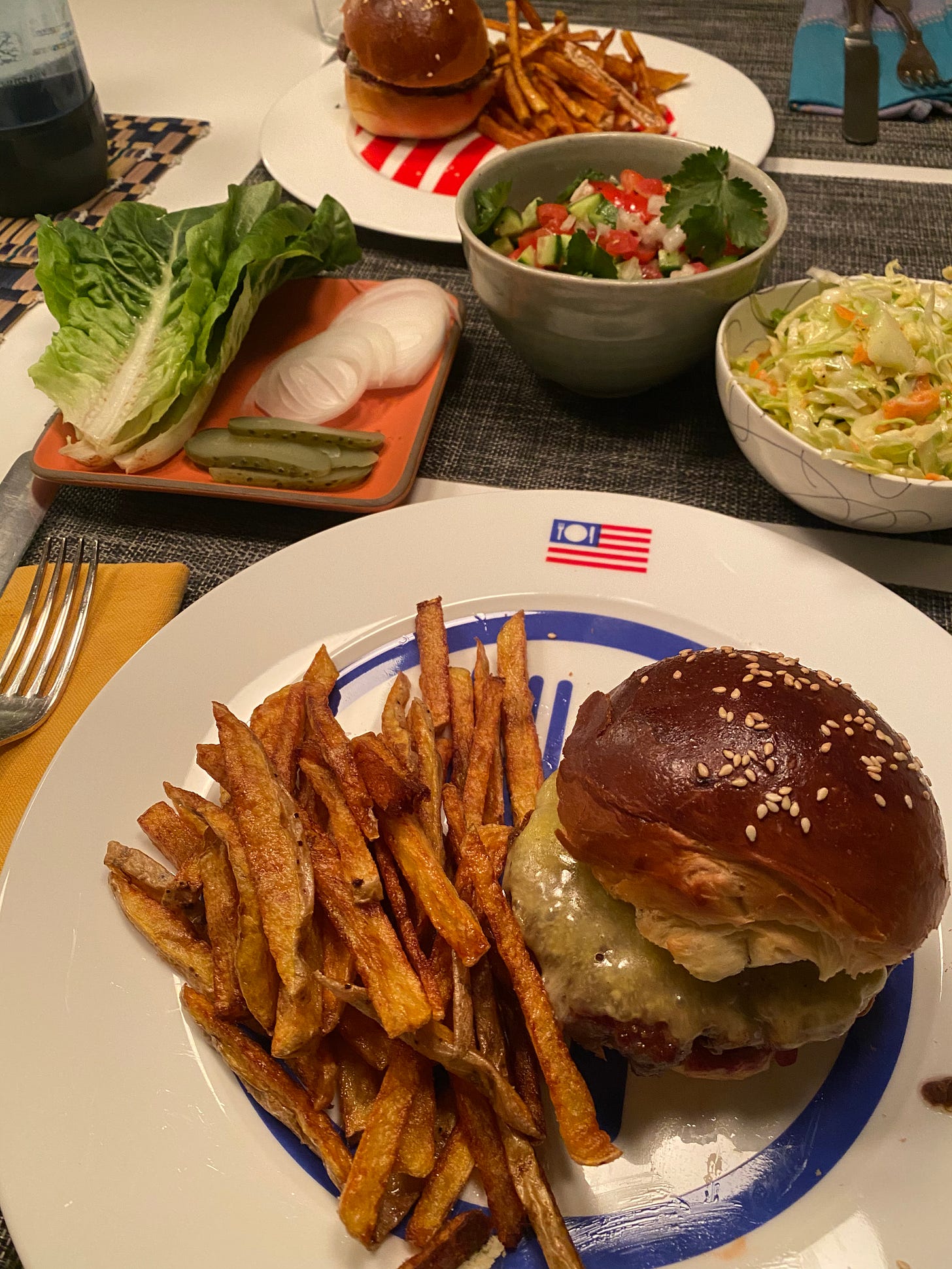
RECIPE: My Hamburgers
(Serves 2 to 4, depending on how large you like your burgers)
1 pound best-quality ground meat, chuck, sirloin, brisket, or a combination, freshly ground
½ teaspoon fine sea salt
Freshly ground black pepper
½ teaspoon coarse or kosher salt
4 ounces medium-sharp cheddar, thinly sliced (optional)
Mix the meat with the fine salt and pepper until combined. Divide the meat into quarters (or thirds or halves if you want larger burgers). Press the portioned meat between your palms to form a patty, while pushing the sides in to make it round-ish. Don’t worry if the surface and the edge are not smooth.
Set a large cast-iron pan over high heat. Sprinkle the kosher salt evenly over the bottom of the pan. When the pan is nice and hot, place the hamburger patties in and push down on them with your palm or a spatula to sear the meat. Let cook, undisturbed, until nicely browned, 4 or 5 minutes. Flip the patties. Press with spatula to sear the second side. Lay the sliced cheese on top, if using, and continue cooking until the desired doneness is reached and the cheese has melted. I like my burgers medium rare, which is about 135°F. But if you didn’t grind the meat yourself, you should really cook it to 155°F., or medium well, to be safe. Make your own risk assessment. If the cheese doesn’t melt fully before the meat is cooked, turn off the heat and cover the pan for a minute.
RECIPE: Fannie Farmer’s Hamburger Buns
(Makes 12 to 16 buns)
1 ½ cups warm water
2/3 cup instant nonfat dry milk powder
1/3 cup lard, chicken schmaltz or butter, melted and cooled, or vegetable oil
1 ½ teaspoons fine sea salt
3 tablespoons sugar
1 large egg
About 5 cups unbleached. all-purpose flour
1 tablespoon instant yeast
Egg wash (egg beaten with water and a pinch of salt)
Sesame seeds
In the bowl of a mixer fitted with a paddle attachement, combine the water, milk powder, lard, salt, sugar, and egg, and mix to combine. Add about 2 cups of the flour and the yeast and mix to form a smooth paste. Switch to the dough hook and add about 2 1/2 cups of the remaining flour. Knead on low until the dough comes together and forms around the hook. Let the machine knead for about 5 minutes. Then turn out onto a lightly floured worksurface and continue kneading by hand for another 5 minutes, adding as much of the remaining flour as necessary to keep the dough from sticking to your hands. Shape into a ball. Grease a clean bowl, place the dough in it, cover with plastic wrap and a dish towel, and let rise in a warm place until double in bulk, about 2 to 3 hours.
Grease 2 baking sheets. Remove the risen dough from the bowl and divide into 12 to 16 equal portions, depending on how big your burgers will be. Pinch each piece of dough into a ball and then roll between the worksurface and your palm to make a tight ball (see how). Place on the baking sheet, flatten with your palm into a 3-inch dish, and repeat, keeping at least 3 inches between each bun. Cover with dish towles and let rise in a warm place until fully proofed, anywhere between 1 and 2 hours. (To test, when poked lightly the dough shouldn’t spring back.)
Preheat the oven to 425°F. Brush each bun with egg wash and sprinkle with sesame seeds. Bake for 20 to 25 minutes until risen and browned. Cool on racks before using.
RECIPE: Easy French Fries
(Serves 1 to 4)
4 small to medium potatoes, about 1 ¼ pounds
2 to 3 cups peanut oil or other neutral vegetable oil
Fine sea salt
Rinse the potatoes and dry them well with paper towel. Do not peel. Slice them lengthwise about ¼-inch thick and then slice the slices into ¼-inch batons. Place the cut potatoes in a heavy, deep-sided pot. I use a small Dutch oven. Pour over enough oil to cover the potatoes by about ½ inch. Place the pot over medium high heat. As the temperature of the oil rises, the oil will begin to froth. Once it really begins to sizzle, which should take 8 to 10 minutes, lower the heat to medium and let the potatoes fry undisturbed for about 4 or 5 minutes. The oil should stay between 325°F and 350°F for the rest of the cooking time, so modulate the heat accordingly. Using tongs or a slotted spoon, jostle the potatoes to prevent clumping, and continue frying until they get to a deep golden brown, which can take a good 20 minutes or more, total. Better to err on the side of too crisp, imho. While frying, line a tray with paper towel or a brown paper bag. Using tongs, a spider, or a slotted spoon, remove the crisp fries to the paper towel to drain. Toss with salt and serve hot.
Hamburger Tales: Milan Expo Edition
With Expo 202 Dubai currently underway and hamburgers on my mind, I can’t help but share this story. In 2013, I led the team that was ultimately selected to create the USA Pavilion at Expo Milano 2015. This was the first world’s fair in the 170-year history of Les Expositions Universelles for which the entire theme was about food. “Feeding the Planet, Energy for Life” was how they articulated it. The brief required that every country’s pavilion needed to focus on their food and food culture, and how we might all address the growing challenge of feeding the 10 billion people who are expected to be living on earth by 2050.
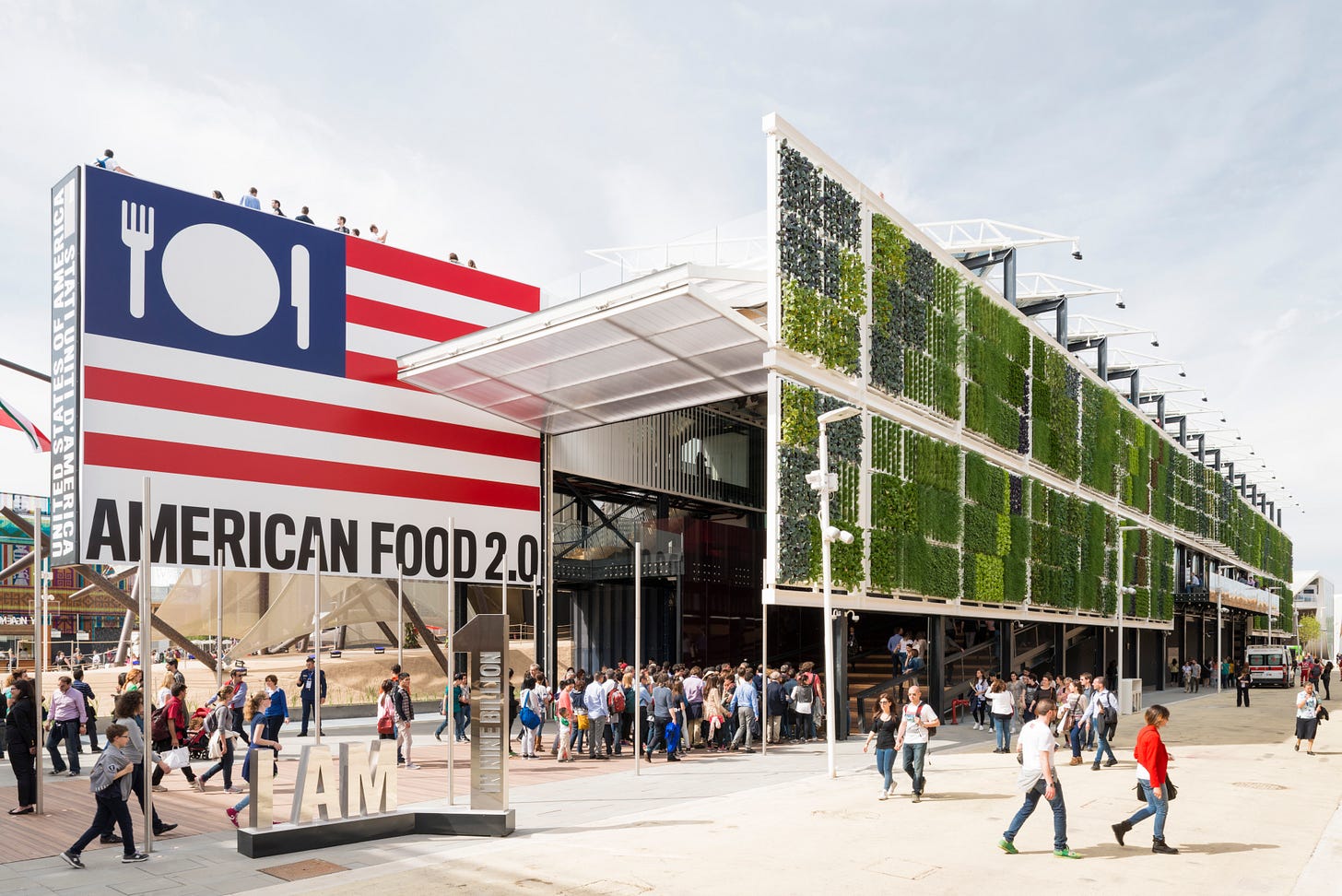
We won the bid by proposing a pavilion that looked at both the tradition and diversity of America’s food culture, and that showcased our research and the entrepreneurial spirit America would bring to the challenges of the future. It was a massive pavilion and a massive undertaking. You can read about it all here in the Commissioner General’s report submitted to Congress after the completion of the Expo. With more than six million visitors to our pavilion during the six months of the Expo, we were the most popular country pavilion next to Italy’s.
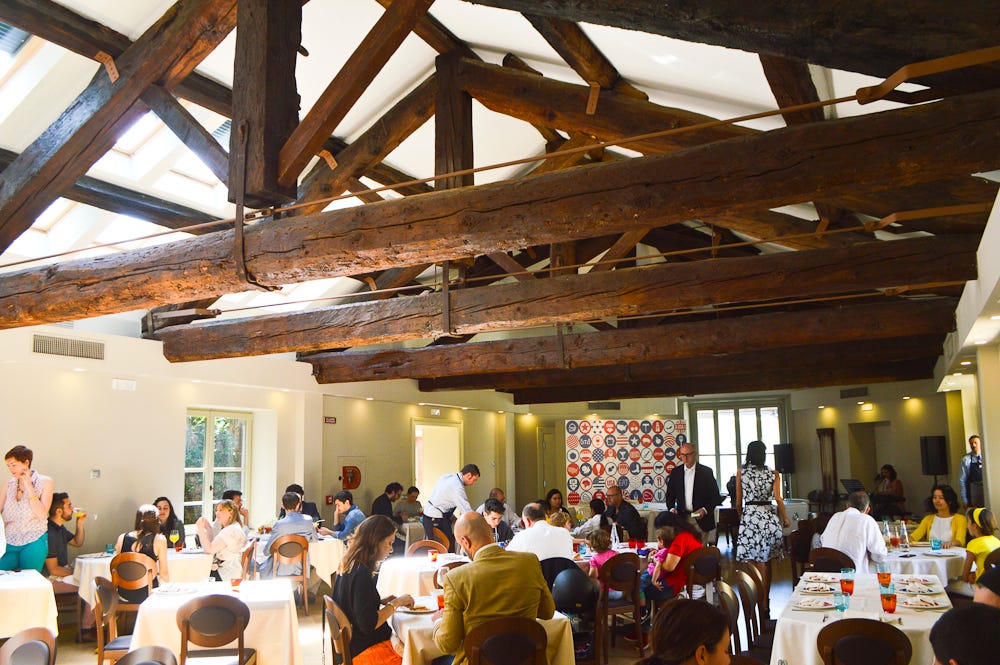
In addition to the exhibits in the main building, we wanted to showcase the range of cuisines in America, which we did with two special dining opportunities. In central Milan, atop the famed Galleria Vittorio Emanuele II, we created the James Beard American Restaurant, a showcase for fine dining to which we invited guest chefs from around the United States to do two nights in residence, offering prix-fixe dinners that highlighted the food of their regions.
On the other end of the dining spectrum, we also wanted to have visitors experience American street food, in particular the food-truck trend that was taking hold across the country. We created a food-truck park on the Expo grounds, near our pavilion, where we built six custom food trucks to highlight this trend. Our original idea was to propose the diversity of the food you find in food trucks here, that is tacos and falafel and French fries and schnitzel, as well as the fusions we all love, like Korean tacos, Mexican pizza, and the like.
When we discussed these plans with our Italian food service operators they looked at us in puzzlement. Why would there be a taco truck at the American pavilion? They wanted to know. And where was the hamburger? Of course, as proud American foodies we were trying to get away from the association of American food solely with hamburgers. In fact, we called our pavilion, American Food 2.0, to indicate this was an updated version of American food, not the fast food you expected. Plus, burgers aren’t exactly the best item to focus on from a sustainability perspective.
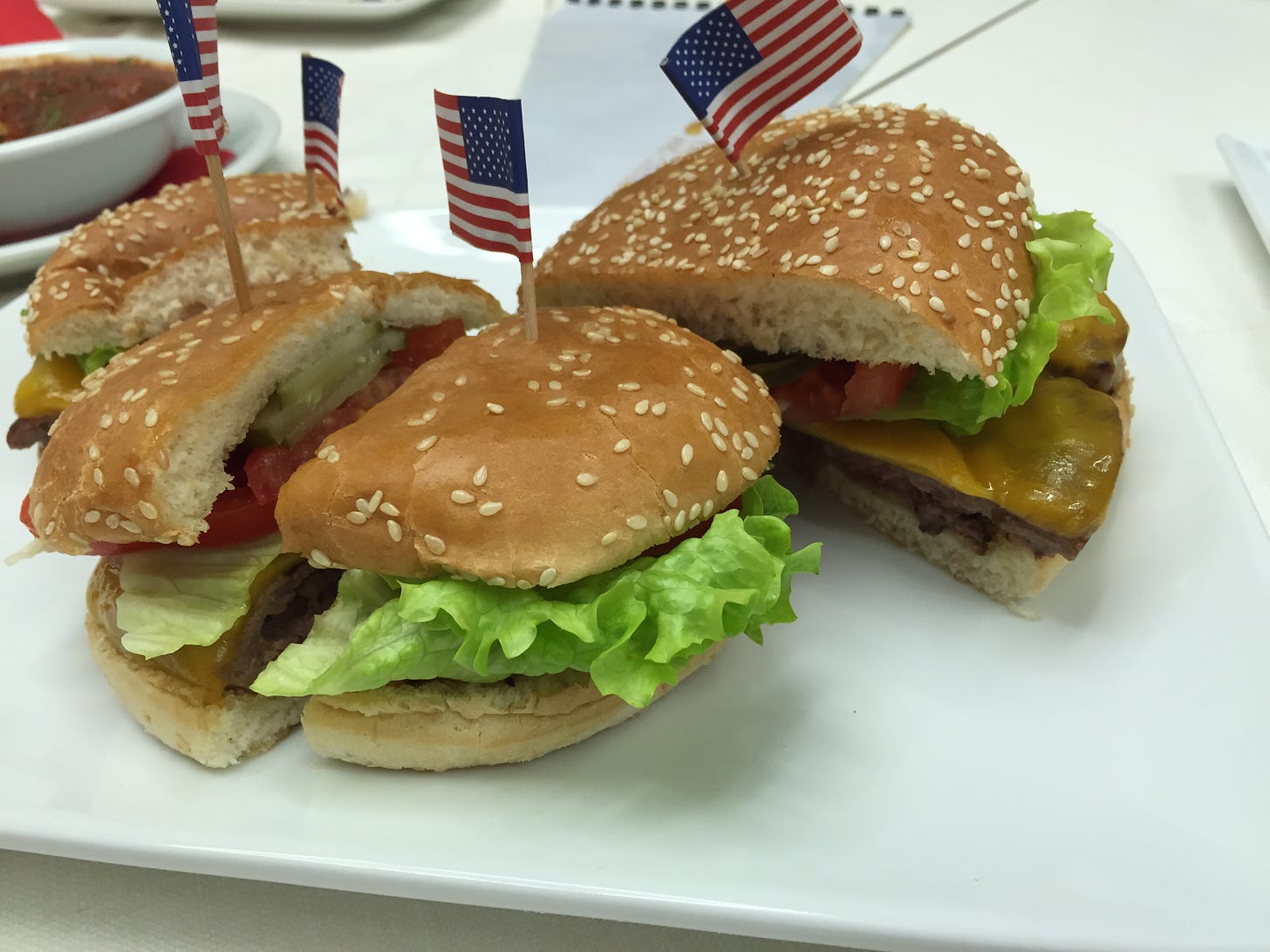
Our operators convinced us that visitors to the American pavilion would expect to find a great hamburger, there. In fact, hamburgers were a huge trend in Milan at that moment. Every block of the city seemed to have a restaurant touting its burger, and the few we tried left us wanting. We conceded, allowing one of the six trucks to serve burgers. We created a great burger, with brioche-style buns, baked locally, and imported American Black Angus beef.
I think you can guess how this story goes. By the end of the Expo, two additional trucks were converted to burger trucks, fully half of all we had, and we ended up selling over 600,000 burgers. Sometimes you just have to meet people where they are.
